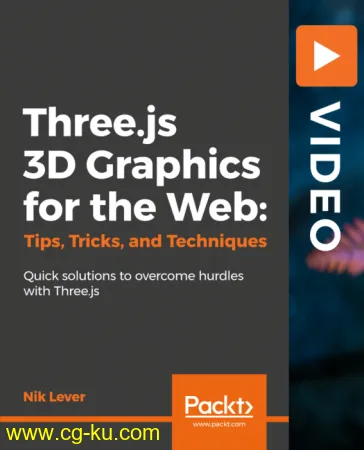h264, yuv420p, 1920x1080 |ENGLISH, aac, 48000 Hz, 2 channels, s16 | 3h 33 mn | 1.36 GB
Instructor: Nik Lever
Effective recipes for building stunning graphics for the web
Learn
Learn about geometry classes (usually omitted from most tutorials)
Learn to use helper classes and developer tools to debug your projects
Find out how GLSL can create amazing effects at the speed of your GPU
Physics is fun! Find out how to utilize two different libraries to add physical motion to your scenes
Learn to create terrains from a simple function
Go from novice to expert by using particles to add many effects
Use path-finding techniques to overcome the tricky process of navigating a camera around a complex environment
Find out how to use AudioListeners to add immersive 3D sound to your scenes.
About
Three.js is one of the most popular JavaScript frameworks for displaying 3D content (such as models, games, music videos, scientific and data visualizations, or anything else you can imagine), on the web, right in your browser (and including mobile devices!).
In this course, you'll learn neat tips, tricks, and techniques for using the library that will take your skills to the next level. You will start with advanced geometry techniques you can use to create models, then learn how to work with GLSL, and master Three.js physics and particles. You will also learn about various Three.js helpers and debugging techniques you can use to track down problems and use Chrome's developer tools in to edit 3D projects at runtime. Next, you will delve into path-finding techniques and 3D audio tricks (such as navigation mesh and AudioListeners/analyzers) to add life to your 3D projects.
By the end of the course, your expertise in using Three.js for your 3D graphics and visualization projects will be richer and broader, thus separating you from the competition.
All code files and supporting files for this course are available on Github:
Features
Discover parts of the Three.js library not covered by most tutorials, including procedural geometry, particles, and path-finding
Understand how to add physics to your scenes and learn to use 3D audio in your projects
Get a broad understanding of GLSL, the OpenGL Shading Language, to extend the number of shaders available in the library

发布日期: 2020-02-22